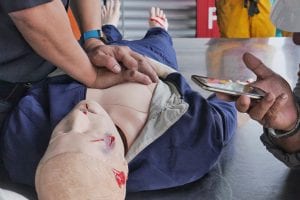JTI, CARRS-Q, MAIC & TMR joint research interests for potential students posting.
 QUT’s Centre for Accident Research and Road Safety – Queensland (CARRS-Q) and Jamieson Trauma Institute (JTI) share a common focus on the prevention of injury and trauma as a result of road crashes. We work with people and data to address current and emerging issues and trends, with a focus on policy and practice relevant research. This spans multiple disciplines, particularly including epidemiology, engineering, and behavioural and health sciences and services.
QUT’s Centre for Accident Research and Road Safety – Queensland (CARRS-Q) and Jamieson Trauma Institute (JTI) share a common focus on the prevention of injury and trauma as a result of road crashes. We work with people and data to address current and emerging issues and trends, with a focus on policy and practice relevant research. This spans multiple disciplines, particularly including epidemiology, engineering, and behavioural and health sciences and services.
Our research with people crosses university, hospital and community settings, spanning all road users (drivers, riders, passengers, cyclists and pedestrians) and vehicle types (e.g., cars, motorcycles, heavy vehicles and rideables) across the age spectrum. Routinely collected data informing our research endeavours include police-recorded crashes, vehicle operator licence status and offences, emergency medical services responses, emergency department presentations, hospital admissions, autopsy reports, coroner records, and compulsory third party (CTP) insurance and WorkCover claims. Research strengths include data linkage and analysis, including complex modelling, machine learning, observation and qualitative methods.
Current project areas of interest for joint supervision include: exploring intersections between clinical and epidemiological data, such as the role of social determinants of health, particularly rurality, Indigeneity, socio-economic status and mental health; better understanding the biomechanics of injury, trauma and survivability outcomes from the point of crash, including the roles of vehicles, geographical locations, first responder / emergency responses and/or treatment options; understanding barriers and facilitators to access and use of CTP insurance and subsequent outcomes; exploring potential innovations in prevention and emergency responses offered by advances in cooperative and automated vehicles; and exploring current shifts in data trends in the context of COVID-19, including in relation to seasonal patterns and people movements.
